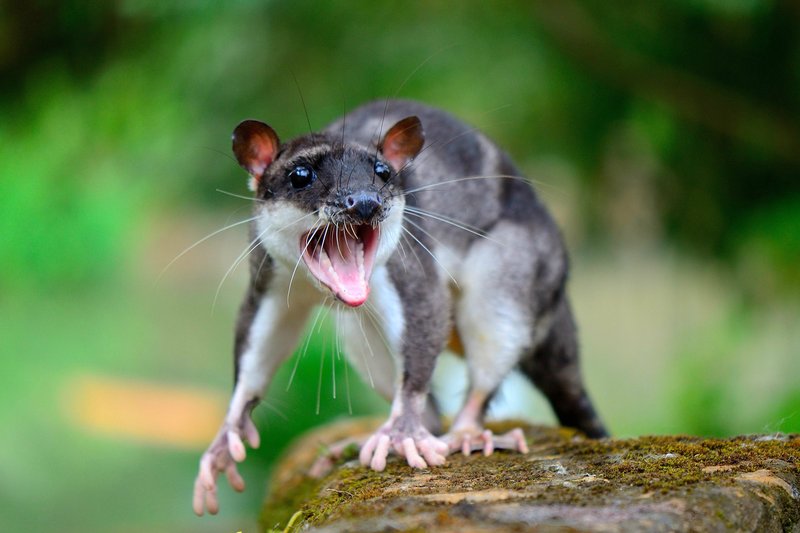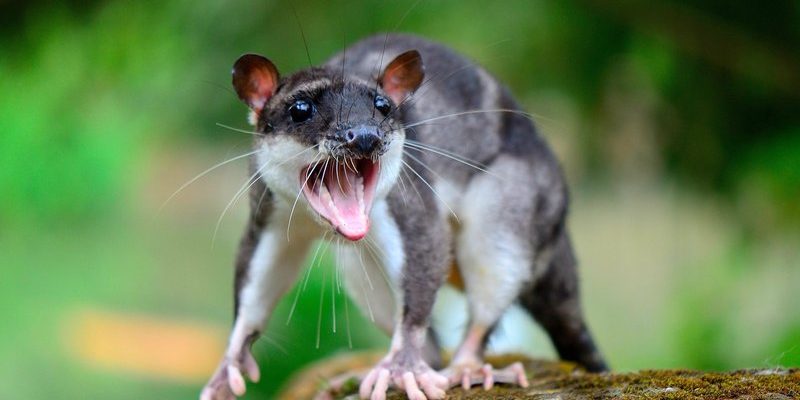
The yapok is fascinating because it’s the only truly aquatic marsupial. Think of it as nature’s little swimmer, equipped with webbed feet and a waterproof coat. This makes it uniquely suited to a life spent foraging in the water, which is where it finds most of its food. So, what exactly is this creature doing in its environment, and why does it matter? Let’s dive into the world of the yapok and uncover its key roles in the ecosystem.
What is the Yapok?
The yapok, known scientifically as **Chironectes minimus**, is native to the waterways of South America. This little creature often enjoys a semi-aquatic lifestyle, usually spotted in rivers, lakes, and wetlands. It’s about the size of a domestic cat, with a long body, a pointed snout, and a tail that’s perfect for swimming.
One of the most telling features of the yapok is those **webbed feet**. These adaptations make it an excellent swimmer, allowing it to glide through water effortlessly to hunt for food. It’s a bit like having built-in flippers! They primarily feed on small fish, crustaceans, and insects. This diet keeps their hunting skills sharp and plays a role in controlling these populations in their aquatic habitat.
Interestingly, the yapok is part of the marsupial family, which means they carry their young in a pouch, just like kangaroos. This characteristic is quite special among aquatic animals and showcases how diverse adaptations can be in nature.
Habitat and Behavior
You might be wondering, what exactly does the yapok call home? These creatures prefer freshwater environments like rivers, ponds, and marshes, thriving in areas with plenty of vegetation for cover. Their semi-aquatic lifestyle means they can easily transition between land and water, which is pretty fascinating when you think about it.
Yapoks are nocturnal animals, meaning they’re most active at night. During the day, they often find cozy spots among the reeds and grasses to nap and hide from potential predators. You could say they have perfected the art of staying low-key! When dusk falls, they venture out to hunt, using their keen sense of smell to locate food beneath the water’s surface.
This behavioral adaptation is crucial for their survival. By being active during the night, the yapok can avoid many daytime predators, including birds of prey and larger mammals. It’s like having a built-in safety strategy that allows them to thrive in a world full of dangers.
Importance in the Food Web
Every creature has a role to play in its ecosystem, and the yapok is no exception. It serves as both a predator and prey in the food web, contributing to the delicate balance of life. By feeding on small fish and insects, they help control those populations. This is essential because overpopulation of these species could lead to imbalances in the ecosystem, affecting plant life and other wildlife.
On the flip side, yapoks themselves are a food source for larger predators. Birds of prey, snakes, and larger mammals often see the yapok as a meal. Thus, they play an integral role in transferring energy through the food chain. If you think of the ecosystem as a giant tapestry, the yapok is a colorful thread that adds to the overall design.
Additionally, as they forage and swim through their habitats, yapoks contribute to the health of aquatic environments. Their movements can help aerate the water, promoting healthier ecosystems for fish and plant life. This interaction highlights how even small creatures can create positive ripple effects in their surroundings.
Conservation Status
Sadly, like many wildlife species, the yapok faces threats due to habitat destruction and pollution. Wetland areas are disappearing, making it harder for them to find food and safe places to live. It’s a little like moving to a new neighborhood where the shops are closed and the parks are full of litter—definitely not ideal!
Efforts are being made to conserve the habitats where yapoks thrive. Protecting wetlands and ensuring clean water sources not only helps the yapok but also benefits countless other species that rely on these fragile ecosystems. Conservation initiatives are crucial in keeping this unique species around for future generations to appreciate and learn about.
By raising awareness about the yapok and its role, we can encourage people to take action. Protecting one species can lead to healthier ecosystems, benefiting all forms of life.
How We Can Help
So, what can you do to help the yapok? Even if you’re not living in South America, you can still play a part in wildlife conservation. Here are some ways to contribute:
- Educate Others: Share what you’ve learned about the yapok and its ecosystem. The more people know, the better!
- Support Conservation Organizations: Consider donating to groups that focus on wetland protection and wildlife conservation.
- Practice Responsible Habits: Adopt environmentally friendly practices in your daily life, like reducing waste and conserving water.
- Advocate for Policy Change: Get involved in local conservation efforts, whether that’s volunteering or supporting legislation aimed at protecting natural habitats.
Even small actions can lead to big changes when we come together for the sake of our planet’s wildlife.
The Connection to Biodiversity
Biodiversity, or the variety of life in a particular habitat, is vital to a healthy ecosystem. The yapok contributes to this biodiversity, serving not only as a unique species but also as a part of the intricate web of life that includes plants, insects, and other animals.
Each species plays a role, from the smallest microorganism to the largest predator. When one piece of this puzzle is removed, it can lead to unforeseen consequences. By protecting the yapok and its habitat, we help ensure that these connections remain intact. It’s a reminder of how interconnected all living things really are.
Let’s face it: a world without the yapok would be a little less interesting. Their quirks and contributions add to the rich tapestry of life, showing us just how vital all creatures are, no matter their size or swimming skills.
In conclusion, the yapok is more than just a cute, water-loving marsupial; it’s a key player in the environmental drama unfolding in South American wetlands. By understanding its role, we gain greater insight into the importance of conservation and the delicate balance of our ecosystems. The next time you think about wildlife, remember—every little creature, even the humble yapok, has a story worth telling and a role worth preserving.

